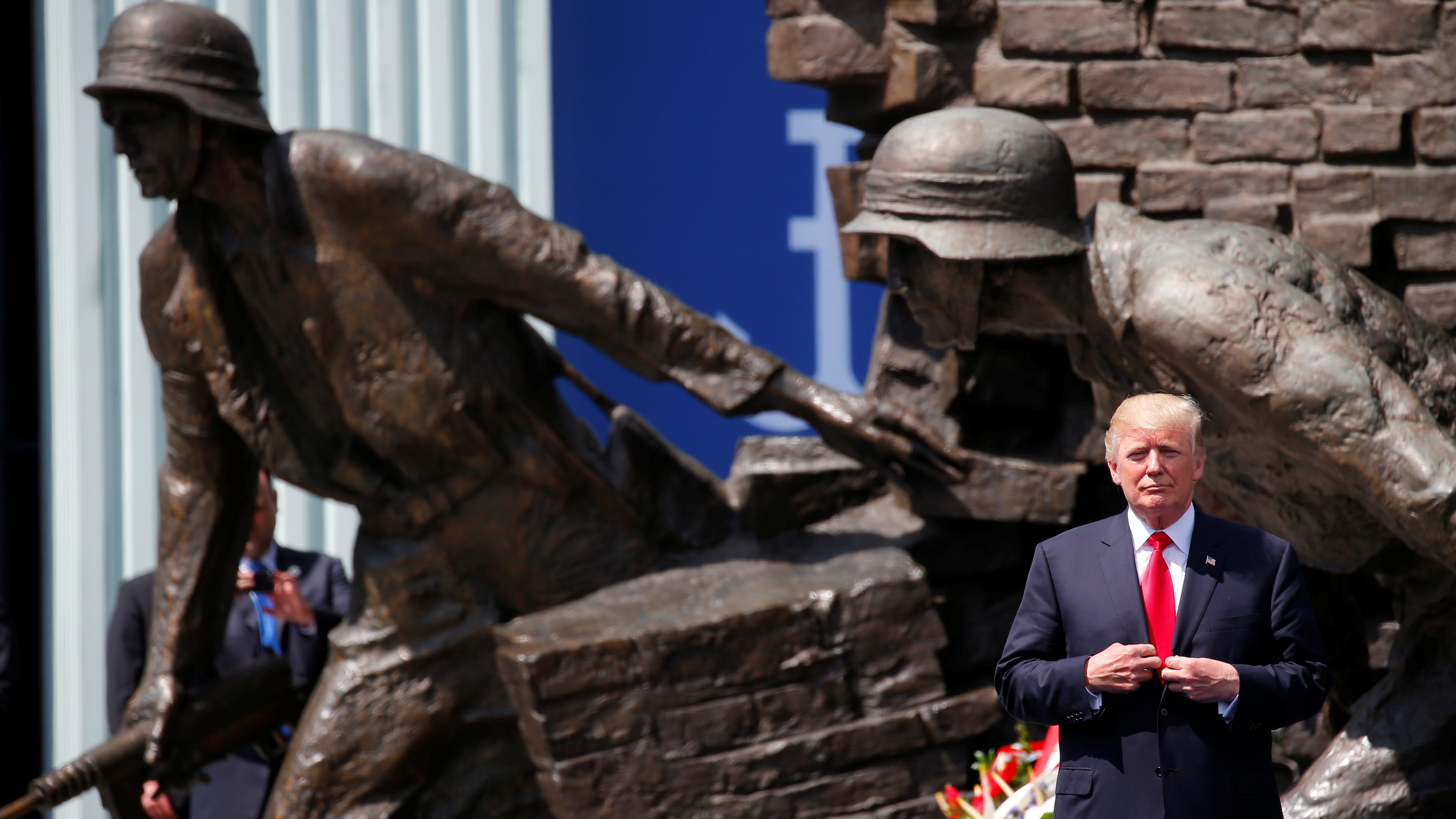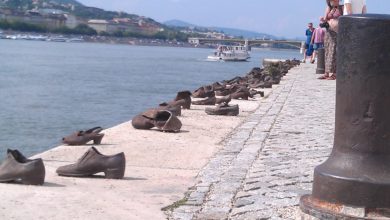Trump’s speech began with a very lengthy and belabored series of shout-outs to various attendees, including the rightwing President of Poland, Lech Walesa (a leader in the demise of socialist Poland) and, bizarrely, the entire Polish people for “the generosity [they] have shown in welcoming [U.S.] soldiers to [their] country.”
The speech then launched into a series of remarks that can be interpreted as nothing other than threats, outright lies and barefaced racism. Trump focused the majority of his speech outlining a so-called clash of
civilizations. He started by pandering to the rightwing audience by rattling off almost every anti-communist cliché that could be used as applause lines, from referring to Poland and other Eastern European countries as “captive nations of Europe [which] endured a brutal campaign to demolish freedom, your faith, your laws, your history, your identity”—notwithstanding the fact that Poland was in fact liberated from Nazi occupation at the hands of the Soviet Red Army, that living conditions rose dramatically under socialism and that living standards correspondingly fell dramatically following capitalist restoration in Poland in the 1990s.
Not once did Trump reference the staggering numbers of Eastern European immigrants who left their home countries in the past 20 years to escape the poverty that beset their countries. Of course, that message would not have resonated with the audience of Polish right-wingers, many of whom were Law and Justice Party members bussed to Warsaw specifically to support Trump’s speech.
Moreover, such a reference to Poland’s deep social stratification and widespread poverty would also undermine his later, more salient point: that “there are dire threats to our security and to our way of life… We are confronted by another oppressive ideology — one that seeks to export terrorism and extremism all around the globe. America and Europe have suffered one terror attack after another.” Having agitated the crowd using his tried-and-true methods of pandering and demagogy, Trump focused on the “forces, whether they come from inside or out, from the South or the East, that threaten over time to undermine these values and to erase the bonds of culture, faith and tradition that make us who we are.”
Plainly, the practical crux of Trump’s speech was this: vague, unnamed forces “from the South or the East” seek to destroy “Western Civilization.” Compare this message with any fascist leader’s program, any Klan rally speech or the words of any other well-known racist, xenophobic or pro-imperialist. If stripped of references that date it to 2017, the speech would be at home in the collected works of Cecil Rhodes,
Theodore Roosevelt or even those of fascist leaders who likewise claimed the titles of defenders of “Western Civilization.”
Trump, in other words, mobilized the same fascist rhetoric and imagery that garnered him David Duke’s support and adapted it to the keynote address of his first foreign tour. Trump’s speech and general foreign policy shows in living color that there is no substitute for an active, well-organized people’s movement. Elevating, building and advancing the resistance to Trump’s policies and program becomes ever more an imperative not only for those who have been in the struggle already, but also for those who voted for Trump on the false promises that he would produce job security for the U.S. working class and end the deeply unpopular foreign policy of endless war and confrontation.







